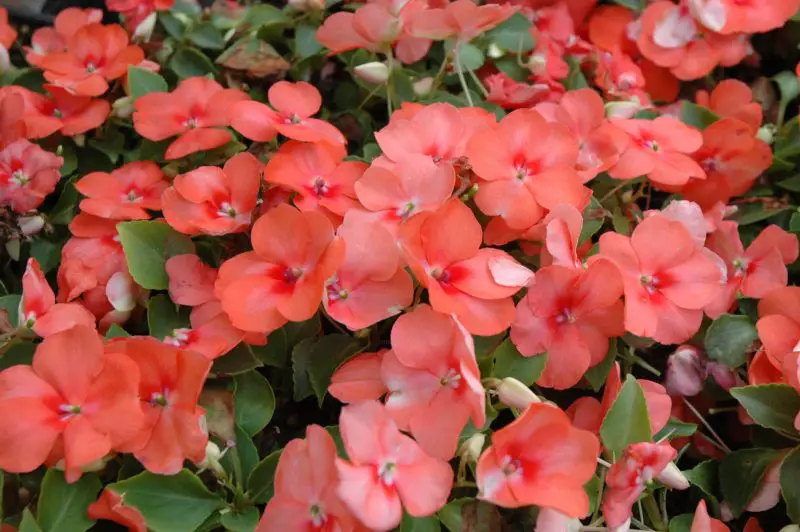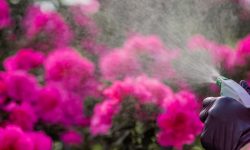Impatiens are beloved by gardeners for their brilliant blooms and versatility in the landscape. Whether you’re cultivating shady beds or dappled woodland paths, these plants offer reliable color from late spring through the first frost. They thrive in containers, hanging baskets, garden borders, and ground cover plantings. Their ability to brighten even the darkest corners of a garden makes them an essential choice for both novice and experienced gardeners.
There are several types of impatiens, each with unique characteristics and growing needs. Whether you choose the classic Impatiens walleriana, vibrant New Guinea impatiens, or the sun-loving SunPatiens, understanding the specific care requirements of each variety is key to cultivating a healthy, thriving display.
Choosing the Right Impatiens Variety

The first step in caring for impatiens is selecting the variety that best suits your garden environment. Impatiens walleriana, often known as common impatiens or busy Lizzies, are ideal for full to partial shade and are prized for their continuous, vibrant blooms. These are perfect for shaded porches, under trees, and north-facing beds.
New Guinea impatiens are more tolerant of sun exposure and have striking foliage along with larger flowers. They perform well in areas that receive morning sun and afternoon shade. These varieties also offer better resistance to diseases like downy mildew.
SunPatiens are a hybrid variety bred to tolerate full sun, heat, and humidity. They’re more vigorous and are excellent for mass plantings, sunny garden beds, and large containers. Their disease resistance and heat tolerance make them a top choice for gardeners in hot, humid regions.
Matching your variety with your climate and light conditions ensures your impatiens will flourish throughout the season.
Understanding Light Requirements
While impatiens are known for thriving in the shade, not all types prefer the same level of light. Traditional Impatiens walleriana do best in partial to full shade. They need protection from the hot afternoon sun to prevent wilting and scorching.
New Guinea impatiens can handle more light. Morning sun followed by afternoon shade allows these plants to produce abundant flowers while protecting their foliage from stress.
SunPatiens, as their name suggests, love full sun. They can handle high light levels and thrive in garden areas where other impatiens might fail. However, even SunPatiens appreciate a bit of shade in extreme heat, especially in warmer growing zones.
Carefully observe the light patterns in your garden to place impatiens where they’ll receive the ideal amount of sunlight for their type.
Preparing Soil for Optimal Growth
Planting Techniques for Success
Proper planting techniques lay the groundwork for vigorous impatiens growth and season-long blooms. Begin by choosing a planting location that receives filtered sunlight or partial shade, as impatiens prefer protection from the harsh midday sun. In hot climates, deeper shade helps prevent wilting and sun scorch, while in cooler regions, a few hours of gentle morning sun can enhance blooming.
When transplanting impatiens seedlings or nursery starts, wait until all danger of frost has passed and soil temperatures have warmed to at least 60°F (15°C). Gently remove the plant from its container, being careful not to disturb the roots. Dig a hole that’s the same depth as the root ball but slightly wider to encourage outward root expansion. Set the plant in place, making sure the crown sits level with the surrounding soil surface. Planting too deeply can lead to stem rot, while planting too shallowly may expose roots to air and stress.
Once planted, firm the soil gently around the roots to eliminate air pockets and provide stability. Water thoroughly to help the plant settle into its new environment. Spacing is equally important—leave about 8 to 12 inches between plants, depending on the variety, to ensure good air circulation and reduce the risk of fungal disease. For container-grown impatiens, choose well-draining pots and avoid crowding multiple plants together in small spaces.
Using the correct technique during planting not only supports healthy root development but also sets the stage for vibrant growth and resilient blooms that can thrive in both shade and dappled sunlight.
Watering Needs and Moisture Management
Impatiens are moisture-loving plants that require consistent watering to maintain their lush, vibrant foliage and prolific blooms. Because their shallow root systems are sensitive to fluctuations in soil moisture, it’s essential to establish a watering routine that keeps the soil evenly moist without becoming soggy.
In shaded beds or woodland gardens, impatiens generally need less frequent watering than in sunnier spots or containers. However, don’t assume that shaded soil stays moist indefinitely—check the top inch of soil regularly. If it feels dry to the touch, it’s time to water. Morning watering is ideal, as it allows foliage to dry before evening, reducing the risk of fungal diseases such as downy mildew or root rot.
For impatiens grown in containers or hanging baskets, moisture management becomes even more critical. These plants tend to dry out more quickly due to increased air exposure. During hot summer months, daily watering may be necessary, especially if the container is small or located in a breezy or bright spot. Use pots with good drainage to prevent water from pooling around the roots, and always empty saucers to avoid standing water.
Adding a layer of organic mulch—such as shredded bark, compost, or leaf mold—around garden-grown impatiens can help retain soil moisture, regulate temperature, and reduce the frequency of watering. In containers, consider using moisture-retentive potting mixes that include ingredients like coconut coir or water-holding crystals to extend the time between waterings.
Understanding your growing conditions and observing your plants closely will help you adjust your watering practices for optimal moisture levels. Healthy impatiens will reward you with continuous blooms, upright growth, and vivid green foliage throughout the season.
Feeding for Continuous Blooms
Impatiens need regular feeding to bloom consistently from spring to fall. Start by preparing the soil with compost or a balanced slow-release fertilizer before planting. For containers, use potting mix enriched with nutrients or add your own slow-release formula.
Once growth begins, apply a water-soluble fertilizer every two to three weeks. A balanced blend like 10-10-10 or 20-20-20 supports both foliage and flower production. In midsummer, switch to a bloom booster with higher phosphorus to encourage more blossoms.
Avoid over-fertilizing, especially with high-nitrogen formulas that promote leaves over flowers. Container impatiens may need more frequent feeding due to nutrient leaching from watering. Watch for signs like pale leaves or weak blooms to fine-tune your routine.
With consistent feeding, your impatiens will reward you with lush, colorful flowers throughout the season.
Pinching and Pruning Techniques
To keep impatiens lush, full, and continuously blooming, regular pinching and pruning are essential. In the early stages of growth, pinching back the tips of young stems encourages the plant to develop side shoots rather than growing tall and spindly. Simply use your fingers to remove the top inch or so of new growth—this triggers branching and results in a bushier, more compact form that supports more blooms.
As your impatiens mature, continue to monitor their shape and health. If the plants begin to stretch or look leggy—especially in low light conditions—use clean, sharp scissors or pruners to lightly trim back a third of the length of the stems. This not only restores a neat appearance but also invigorates the plant and encourages a fresh flush of flowers.
Throughout the blooming season, deadhead any faded or spent blooms. While many modern impatiens varieties are self-cleaning, removing old flowers by hand can speed up the cycle of new bloom production and reduce the chance of mold or rot forming in humid conditions.
Consistent pinching and selective pruning ensure that your impatiens remain dense, colorful, and thriving from spring through the end of the growing season.
Managing Common Pests and Diseases
Impatiens are generally low-maintenance, but they can be vulnerable to certain pests and diseases, especially in warm, humid environments or when grown in overly crowded conditions. Early detection and proper care are key to preventing problems from spreading and affecting the health of your plants.
Aphids, spider mites, and thrips are the most common pests that target impatiens. These insects feed on plant sap, causing distorted leaves, yellowing, or stunted growth. To manage them, regularly inspect the undersides of leaves and new growth. If pests are spotted, wash the plant gently with a strong stream of water or apply insecticidal soap or neem oil early in the morning when the temperature is cooler.
Fungal diseases such as downy mildew, powdery mildew, and root rot can also affect impatiens, especially in areas with poor air circulation or excessive moisture. Downy mildew, in particular, can cause leaves to yellow, curl, and eventually drop. If this disease becomes a recurring issue in your garden, consider growing New Guinea impatiens or other mildew-resistant varieties.
To prevent fungal problems, water impatiens at the base rather than from above, avoid overhead irrigation in the evening, and provide enough space between plants to promote airflow. Always remove any fallen or diseased foliage promptly to keep the growing environment clean and healthy.
With consistent monitoring, timely intervention, and good cultural practices, you can keep your impatiens free from pests and diseases and thriving throughout the growing season.
Mulching for Moisture and Weed Control
Mulching plays a vital role in helping impatiens thrive, especially in warm or dry climates. A 2–3 inch layer of organic mulch such as shredded bark, compost, or pine needles helps retain soil moisture by reducing evaporation, which is essential since impatiens prefer consistently moist—but not soggy—soil.
In addition to moisture conservation, mulch also suppresses weed growth around your plants. Weeds compete for nutrients and water, so keeping them at bay allows impatiens to grow more vigorously. Mulch also moderates soil temperature, keeping roots cooler in hot weather and warmer during unexpected cool spells.
Apply mulch after planting, keeping it a few inches away from the stems to avoid rot. Refresh the mulch as needed during the growing season to maintain its effectiveness. This simple step supports healthier, more resilient impatiens with less effort.
Seasonal Care and Maintenance
Caring for impatiens throughout the seasons ensures they remain vibrant and blooming from spring to fall. As temperatures warm in early spring, prepare your garden beds by loosening the soil, adding compost, and checking drainage. Once the risk of frost has passed, you can transplant young impatiens outdoors for a strong start.
During summer, impatiens need regular watering, especially during heatwaves or dry spells. Morning watering is best to allow moisture to soak in without encouraging disease. Continue feeding with a balanced fertilizer every two to three weeks to fuel continuous blooms.
In fall, as temperatures cool and days shorten, blooming may slow. Trim back leggy growth to keep plants compact and attractive. In frost-prone areas, impatiens are typically grown as annuals and will decline with the first frost. You can either collect seeds for next season or take cuttings to overwinter indoors if you’re growing a variety that roots easily.
With consistent seasonal attention, your impatiens will deliver lasting color and lush growth from early spring right through the end of the growing season.
Growing Impatiens Indoors or Overwintering
In cold regions where impatiens can’t survive frost, you can overwinter them indoors to preserve your favorite plants. Before the first frost, dig up healthy specimens, trim back one-third of the foliage, and replant them in containers filled with fresh, well-draining potting mix.
Place the pots in a bright spot with indirect sunlight, keeping indoor temperatures around 60°F to 70°F (15°C to 21°C). Water sparingly through winter—just enough to keep the soil from drying out completely. Hold off on fertilizing until early spring when new growth begins.
Alternatively, take 4–6 inch cuttings in late summer from non-flowering stems. Root them in water or moist soil, then pot them up and grow indoors over winter. This method saves space and provides fresh, compact plants for replanting in spring.
By overwintering entire plants or cuttings, you’ll save money and enjoy a head start on next season’s blooms.
Using Impatiens in Garden Design
Impatiens are incredibly versatile and can transform shaded and semi-shaded areas into vibrant displays of color. Their compact growth habit, continuous blooms, and wide range of colors make them ideal for both formal and informal garden styles.
In flower beds, impatiens work well as border plants or mass plantings under trees, where other sun-loving flowers struggle. Their ability to thrive in low light makes them perfect companions for hostas, ferns, and caladiums, creating lush understory plantings.
For container gardening, impatiens are a top choice. Use them in pots, window boxes, and hanging baskets to add splashes of color to patios, porches, or balconies. Combine them with trailing plants like ivy or sweet potato vine for added texture and dimension.
In mixed beds, impatiens can be used to fill gaps between shrubs or taller perennials, offering a carpet of blooms that softens hard edges and adds seasonal color. You can also use impatiens to create monochromatic themes or color-block designs, depending on the desired aesthetic.
Because they bloom reliably all season, impatiens are ideal for focal points, entryways, and high-traffic areas where consistent visual impact is desired. With thoughtful placement and pairing, impatiens can elevate the beauty of nearly any garden space.
Troubleshooting Impatiens Problems
Wilting or Drooping Leaves
When impatiens start to wilt or droop, it’s often a sign of inconsistent watering. These plants have shallow root systems and can dry out quickly in warm weather. If the soil feels dry to the touch, water the plants thoroughly, ensuring moisture reaches the root zone. However, wilting can also result from heat stress or transplant shock, especially when plants are moved during hot periods. Provide afternoon shade and avoid moving or disturbing roots during peak summer heat.
Yellowing Leaves
Leaves turning yellow can be a warning sign of overwatering, poor drainage, or nutrient imbalance. Impatiens dislike “wet feet,” so if your soil remains soggy, roots may begin to rot, causing yellowing and eventual leaf drop. Improve drainage by mixing organic matter into the soil and avoid letting water pool around the roots. Nutrient deficiencies, particularly nitrogen or iron, can also cause yellowing. A complete, balanced fertilizer applied every 4–6 weeks during the growing season will support healthy leaf color.
Fungal Diseases
Impatiens are particularly vulnerable to fungal problems like downy mildew, powdery mildew, and root rot. Downy mildew typically causes pale leaves, white fuzzy growth on the undersides, and rapid defoliation. These diseases thrive in warm, moist, and poorly ventilated conditions. To reduce risk, space your impatiens well, water at the base (not overhead), and remove any affected leaves immediately. Infected plants should be disposed of to prevent spreading, and fungicides may be necessary in persistent cases.
Pests Attacking Foliage
Common pests that attack impatiens include aphids, spider mites, whiteflies, and thrips. These insects feed on plant sap, leading to curled, discolored, or stippled leaves. Aphids often leave behind sticky honeydew, which can attract ants and lead to sooty mold. Begin by spraying the plants with a strong stream of water to dislodge pests. Apply insecticidal soap or neem oil regularly as a preventative. For large infestations, horticultural oil or botanical insecticides may be more effective, but always follow label instructions carefully.
Failure to Bloom
When impatiens grow lush green leaves but fail to bloom, insufficient light is usually the cause. Although they tolerate shade, impatiens still need bright, filtered light to encourage flowering. Plants grown in too much darkness will prioritize foliage growth. Another reason may be overly rich or imbalanced fertilizer—too much nitrogen promotes leafy growth instead of blooms. Switch to a fertilizer with a higher phosphorus content (like 10-20-10) and reduce nitrogen-heavy feeding. Deadheading isn’t necessary, but removing faded or damaged blooms can help redirect energy to flower production.
When to Replace or Replant
End of Season Replacement
As temperatures begin to cool in fall, impatiens will naturally decline. Leaves may yellow, blooms fade, and growth slows significantly. This is a clear signal that it’s time to remove the plants and prepare beds for winter or for cool-season annuals. In frost-prone regions, replanting should wait until after the last frost in spring to avoid cold damage.
Replacing Sick or Dying Plants Mid-Season
If impatiens show signs of irreversible decline mid-season—such as persistent wilting, fungal disease, or root rot—it’s best to remove and replace them quickly. Leaving diseased plants in the ground can spread pathogens to nearby healthy plants. Improve soil drainage, sterilize garden tools, and avoid replanting in the exact same spot if disease was present.
Refreshing Containers and Hanging Baskets
In containers or hanging baskets, impatiens may become root-bound or depleted of nutrients after a few months. If blooming slows or foliage appears stunted despite good care, consider replacing with fresh plants or rejuvenating the pot by adding fresh soil and fertilizer. Regular mid-season replanting in containers helps maintain full, lush displays.
Replanting After Pests or Downy Mildew
In areas where downy mildew or other pest problems have occurred, it’s advisable to avoid replanting impatiens in the same bed the following season. Rotate with other shade-loving plants like coleus or begonias to break the disease cycle and allow the soil to recover.
By timing replacement or replanting strategically, you can keep your impatiens garden thriving and beautiful from early spring through fall.
Frequently Asked Questions About Impatiens Care
Can impatiens wilt from too much sun?
Yes. Although impatiens prefer shade, they can wilt when exposed to strong direct sunlight, especially during hot afternoons. High temperatures cause rapid moisture loss from both soil and foliage, leading to dehydration. To prevent wilting, plant impatiens in partial shade or provide protection from the afternoon sun.
How can I tell if yellowing leaves are from overwatering or nutrient deficiency?
Yellow leaves caused by overwatering are often accompanied by persistently wet soil, limp foliage, and sometimes a musty smell near the base of the plant. In contrast, nutrient deficiency usually begins with older leaves turning yellow while the soil remains well-drained. The foliage remains dry but may appear pale or discolored. Checking soil moisture and monitoring which leaves are affected first can help you pinpoint the cause.
Can I grow impatiens in hanging baskets or containers?
Absolutely. Impatiens thrive in hanging baskets and containers as long as they have enough root space and well-draining soil. They will need more frequent watering than in-ground plants since containers dry out faster. Use a balanced liquid fertilizer every 2–3 weeks to support continuous blooming.
Why are my impatiens not blooming even though the plant looks healthy?
A common reason is lack of sufficient light or excess nitrogen fertilizer. While impatiens prefer shade, they still need bright, indirect light to encourage flower production. Too much nitrogen promotes lush green foliage but few blooms. Switch to a fertilizer with higher phosphorus content, such as a 10-20-10 blend, to promote flowering.
Are impatiens prone to disease, and how can I prevent it?
Yes, impatiens are especially susceptible to fungal diseases like downy mildew in humid conditions. Symptoms include pale or yellowing leaves, rapid defoliation, and a fuzzy white growth on the undersides of leaves. To prevent disease, avoid overhead watering, space plants for good air circulation, and remove infected leaves promptly. During the rainy season, reduce watering and avoid late-day irrigation to help foliage dry out more quickly and discourage fungal growth.
Conclusion: Creating a Thriving Display with Impatiens
With the right care, impatiens offer a season-long display of vibrant color in both sun and shade. By choosing the appropriate variety, providing consistent moisture, feeding regularly, and managing pests and disease, you’ll enjoy lush, flowering plants that enhance any garden space.
Whether you’re growing them in hanging baskets, shady borders, or sunny garden beds, impatiens reward attentive care with eye-catching blooms and resilient beauty. These dependable plants are a joy to grow and a staple in landscapes around the world.






